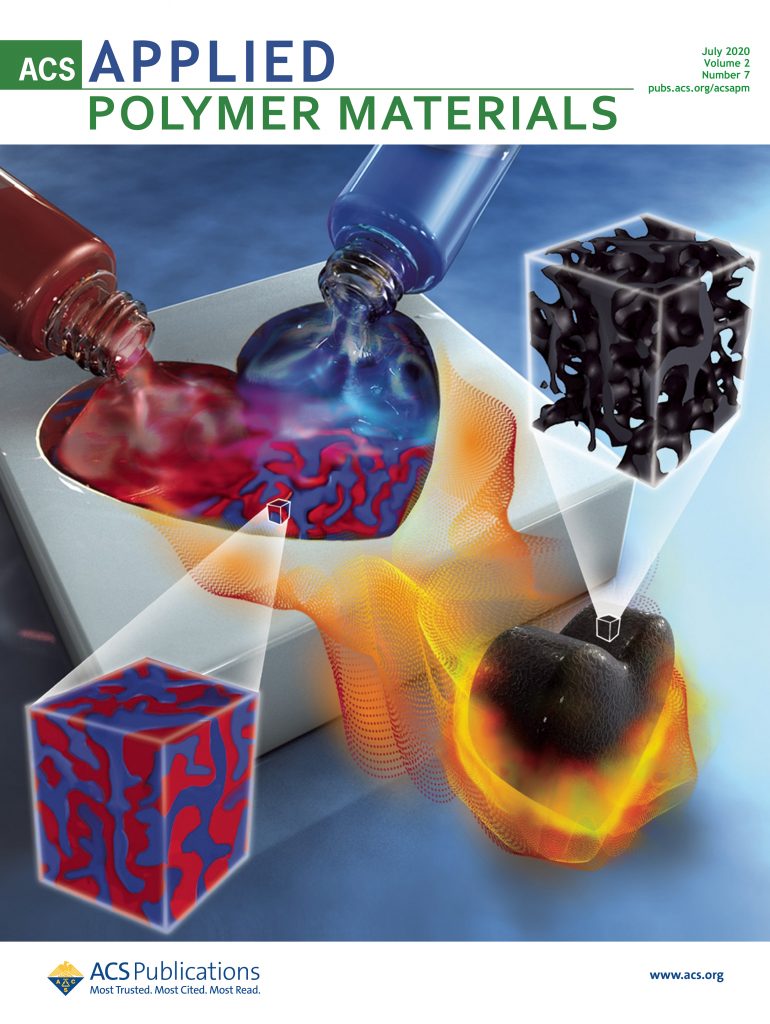可愈合超胶体纳米复合水性涂料
IF 4.7
2区 化学
Q2 MATERIALS SCIENCE, MULTIDISCIPLINARY
引用次数: 0
摘要
水性涂料通常含有纳米填料,以增强其机械或光学特性。然而,这些填料的聚集可能会导致涂层变脆和不透明等不良后果,从而降低其性能和使用寿命。通过控制纳米填料在涂层中的分布和结构排列,并插入可逆化学键,可有效改善涂层的弹性和强度,同时通过可逆化学键的愈合特性延长涂层的使用寿命。聚合物-芯/二氧化硅-电晕超微粒子的水分散体用于制备水性涂层。聚合物和二氧化硅纳米粒子在超胶体组装过程中被硫醇/二硫化物基团预官能化。在干燥和涂层形成过程中,交联剂与超胶体之间进一步建立了二硫桥。将超胶体纳米复合涂层置于有意(物理)损伤下,即钝化和尖锐的表面划痕或切割成两片,然后进行紫外线照射以诱导损伤恢复。通过动态、静态和表面力学分析,研究了涂层的粘弹性和愈合特性。纳米复合涂层对切割损伤和表面划痕有很好的界面修复作用。愈合特性与涂层的粘弹性和二硫桥的界面(再)活化密切相关。与二氧化硅浓度较高的涂层相比,二氧化硅浓度低于临界体积分数的纳米复合涂层具有更高的原位愈合效率。这项研究为控制纳米填料在水性涂料中的分布以及通过机械损伤恢复提高涂料使用寿命的策略提供了启示。本文章由计算机程序翻译,如有差异,请以英文原文为准。

Healable Supracolloidal Nanocomposite Water-Borne Coatings
Water-borne coatings often contain nanofillers to enhance their mechanical or optical properties. The aggregation of these fillers may, however, lead to undesired effects such as brittle and opaque coatings, reducing their performance and lifetime. By controlling the distribution and structural arrangement of the nanofillers in the coatings and inserting reversible chemical bonds, both the elasticity and strength of the coatings may be effectively improved, while healing properties, via the reversible chemistry, extend the coating’s lifetime. Aqueous dispersions of polymer-core/silica-corona supracolloidal particles were used to prepare water-borne coatings. Polymer and silica nanoparticles were prefunctionalized with thiol/disulfide groups during the supracolloid assembly. Disulfide bridges were further established between a cross-linker and the supracolloids during drying and coating formation. The supracolloidal nanocomposite coatings were submitted to intentional (physical) damages, i.e., blunt and sharp surface scratches or cut through into two pieces, and subsequently UV irradiated to induce the recovery of the damage(s). The viscoelasticity and healing properties of the coatings were examined by dynamic, static, and surface mechanical analyses. The nanocomposite coatings showed a great extent of interfacial restoration of cut damage and surface scratches. The healing properties are strongly related to the coating’s viscoelasticity and interfacial (re)activation of the disulfide bridges. Nanocomposite coatings with silica concentrations below their critical volume fraction show higher in situ healing efficiency, as compared to coatings with higher silica concentration. This work provides insights into the control of nanofillers distribution in water-borne coatings and strategies to increase the coating lifetime via mechanical damage recovery.
求助全文
通过发布文献求助,成功后即可免费获取论文全文。
去求助
来源期刊

ACS Applied Polymer Materials
Multiple-
CiteScore
7.20
自引率
6.00%
发文量
810
期刊介绍:
ACS Applied Polymer Materials is an interdisciplinary journal publishing original research covering all aspects of engineering, chemistry, physics, and biology relevant to applications of polymers.
The journal is devoted to reports of new and original experimental and theoretical research of an applied nature that integrates fundamental knowledge in the areas of materials, engineering, physics, bioscience, polymer science and chemistry into important polymer applications. The journal is specifically interested in work that addresses relationships among structure, processing, morphology, chemistry, properties, and function as well as work that provide insights into mechanisms critical to the performance of the polymer for applications.
 求助内容:
求助内容: 应助结果提醒方式:
应助结果提醒方式:


